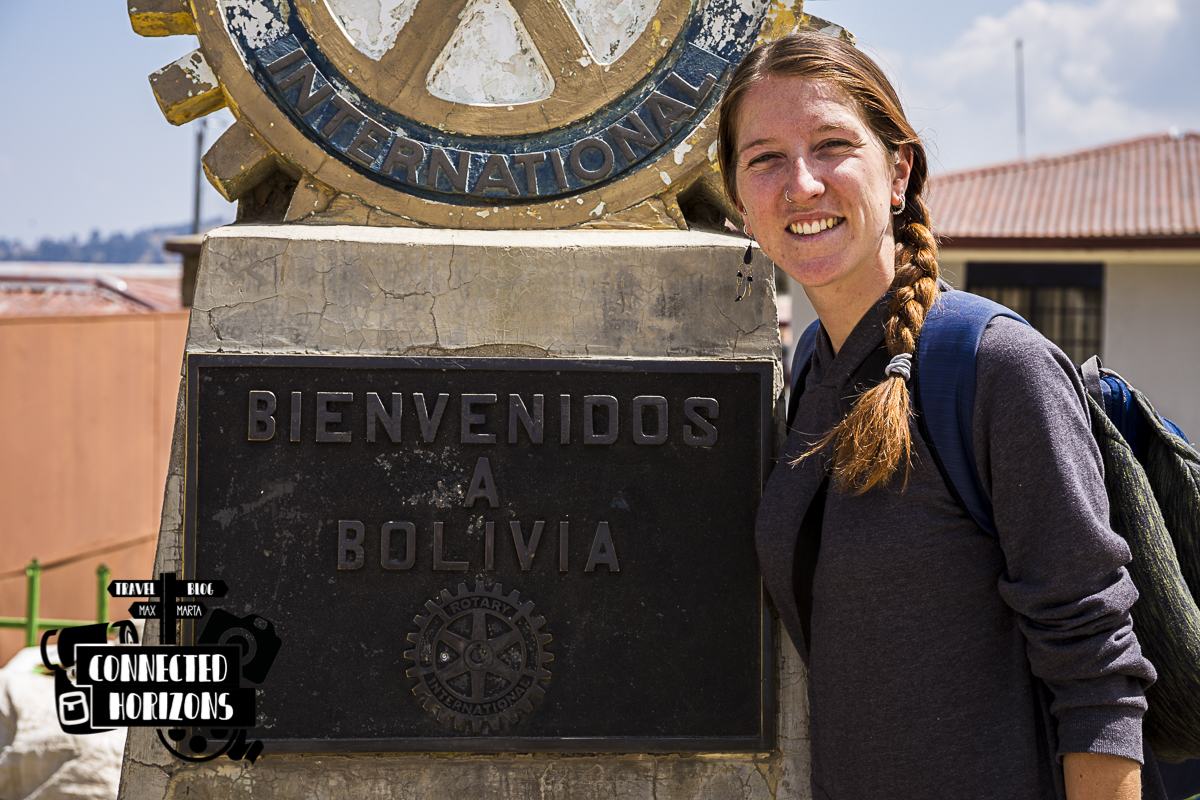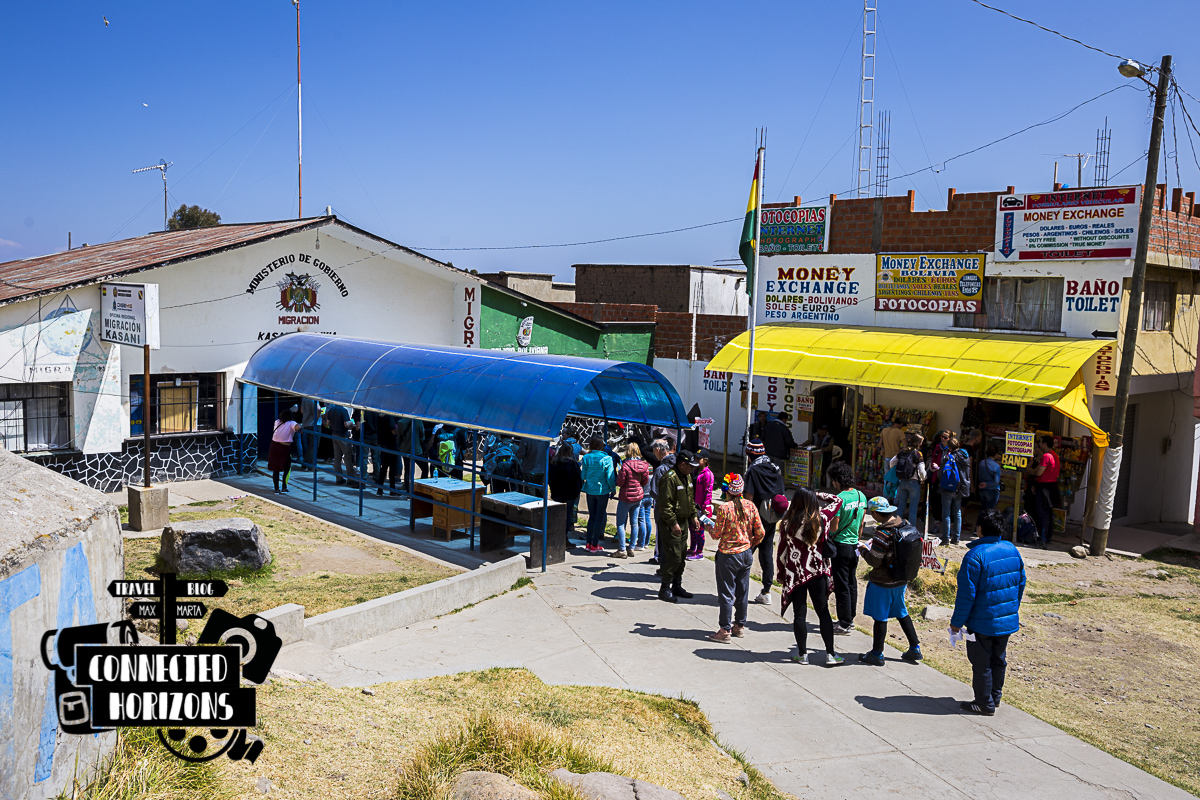After spending a couple of days around the Lake Titicaca visiting Puno and the floating islands of Uros, it is time for us to start a new chapter of our trip: Bolivia. Even though it felt we barely scratched the surface of Peru in over a month that we were here, the idea to see a new country of South America is just thrilling.
In Puno you can find transport straight for the bolivian capital, La Paz, but before that we wanted to see the famous coastal village of Copacabana. If you’re planning to cross the border at Kasani to get from Puno to Copacabana this is the right article for you!
Here’s all you need to know to make this border crossing run smooth.
CHOOSE THE RIGHT BUS
For the first time in Peru, nobody was able to suggest us a decent bus company to make the crossing. Amazingly enough, from luggage theft to money scams to unsafe driving all bus companies did not seem to have a shining past. But how much of this is true?
At time of writing, there are a total of five bus companies (Collectur, Huayruro Tour, Panamericano, Tour Peru and Titicaca) making the route Puno-Copacabana and leaving from the Terminal Terrestre de Puno. All of them are big “luxury” buses, sometimes even double-deck, that include a small snack and a bilingual guide to help you cross the border.
Also in terms of price and timings, all companies are more or less the same. Prices vary from 15 to 20 soles for most companies but Huayruro (which we took in the end) that has a competitive rate of 10 soles/pp. Nearly all buses leave at 7am (excepted Collectur that leaves at 7.30am) and the company Tour Peru also offer an afternoon bus at 2pm.
AVOID SCAMS
Now that you know all bus companies are crappy, you also must be aware of the scams that most of them run.
Money Exchange – All buses, about 5min before reaching the border crossing of Kasani will make a stop at a small break area where you can go to the bathrooms, buy some last snacks/drinks but most importantly exchange money. Now, the bus staff will HIGHLY SUGGEST to change money here (probably because they’re in some kind of agreement with the place) but you absolutely need to avoid that because the rate is very low. Normally, the USD to BOL exchange would be 6.9 but here they change it at 6.7; similarly the PEN to BOL exchange would be at 2.2 but here’s fixed at 2. If you need to change money just do it at the border with the much better change (the official at 6.9) or in Copacabana.
Entrance Tax – When we crossed the border, nobody asked us to pay an entrance fee or similar thing (as you’d know, for europeans there’s no exit/entrance fee for all south american countries) but in other occasions, other travellers have been asked to. If that would be your case, don’t be scared to refuse to pay and let them know you’re going to report the fact; right now, in several bolivian borders there’re some issues with corruption so make sure you fight against it!
Copacabana City Tax – After crossing the border, just on the outskirts of Copacabana the our bus stopped at a small hut where a man entered the bus and required us to pay the Copacabana City Tax. While it was just 1BOL (0.15$) such tax doesn’t exist and its only a way to rip off tourist who are not well-informed or trust the bus company. Nobody on the bus accepted to pay the tax and as soon as some people refused, the man left the bus immediately. The situation was not clear but surely between the bus company and this man there’s an agreement for which they split the money at every successful hit. Please, be aware that this is a complete illegal scam operated on a daily basis so no matter how much they insist, don’t agree to pay it!

THE ACTUAL CROSSING
Thankfully, the process for border crossing is pretty straightforward and your bus guide will likely babysit you all throughout it. On the bus you’ll be given two immigration forms, a green one which is personal and a white one which works for each couple/family or singles if you’re travelling alone. Once again, you’ll be guided through on how you have to compile both forms.
 Bolivian immigration office
Bolivian immigration office
In Kasani, you’ll first stop at the peruvian immigration office to get your exit stamp (make sure to show your Andean card which you were given at the time of entry) and off you go, easy peasy.
At this point, you’ll have to walk through an arch and cross the border to get to the bolivian immigration office to get your entry stamp. The walk is very short and once at the office it won’t take more than 5min to get your passport stamped.

At the border you’ll be given only 30 days to stay inside the country but should you wish to stay more you can simply head to La Paz and extend you stay at the immigration office free of charge.
PLANNING A TRIP TO PERU? CHECK MORE GUIDES BELOW!
[pt_view id=”c969b5d80o”]
